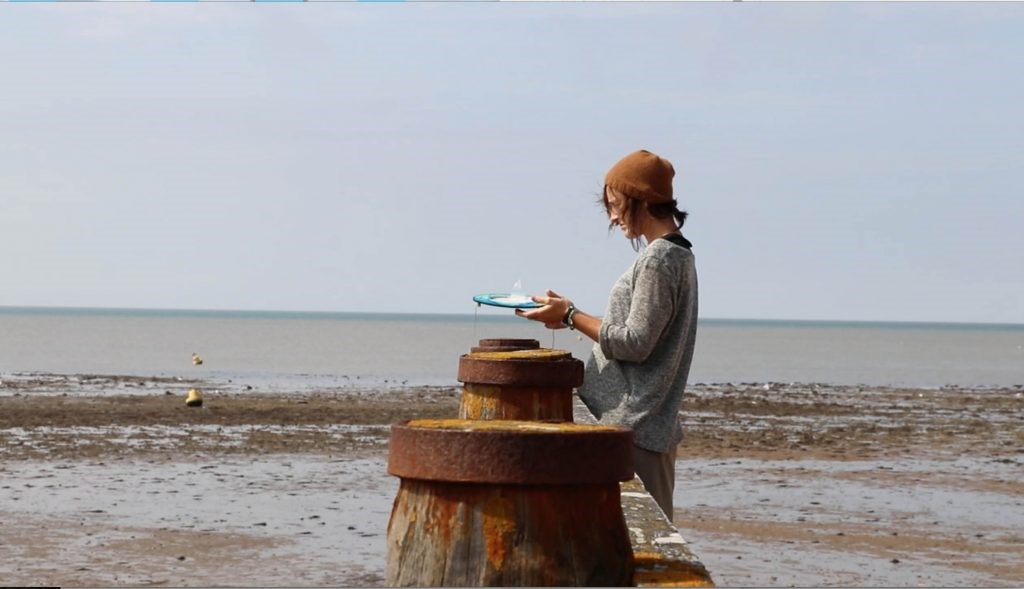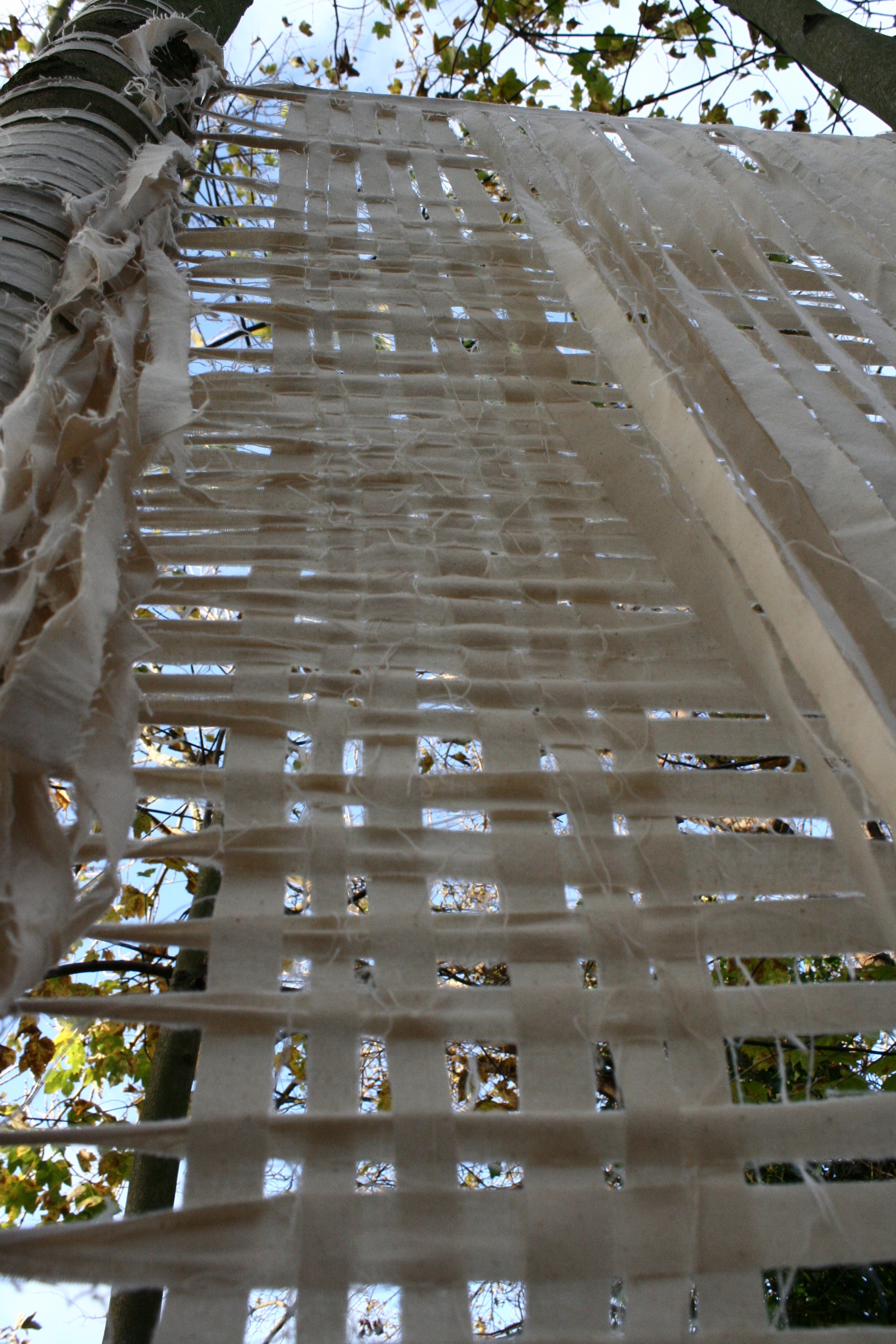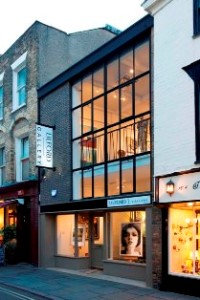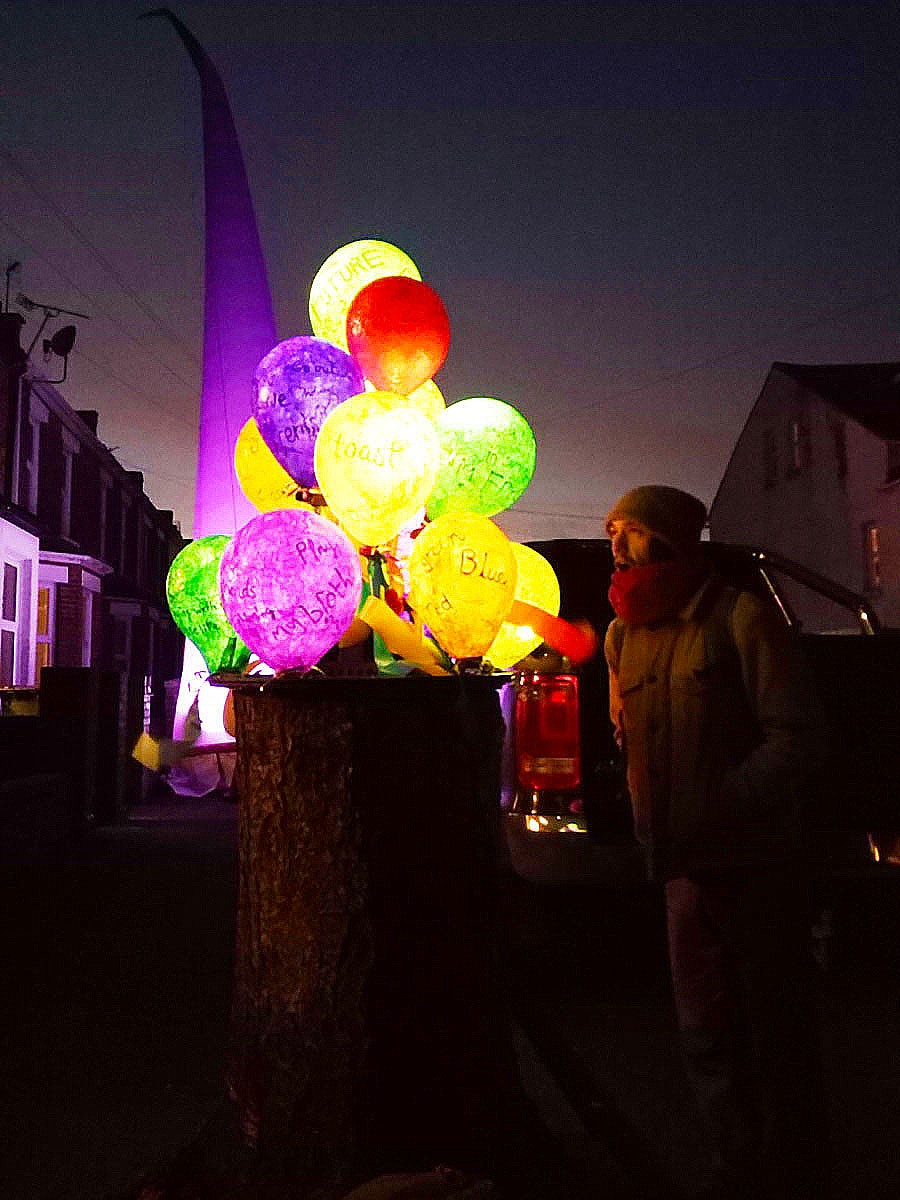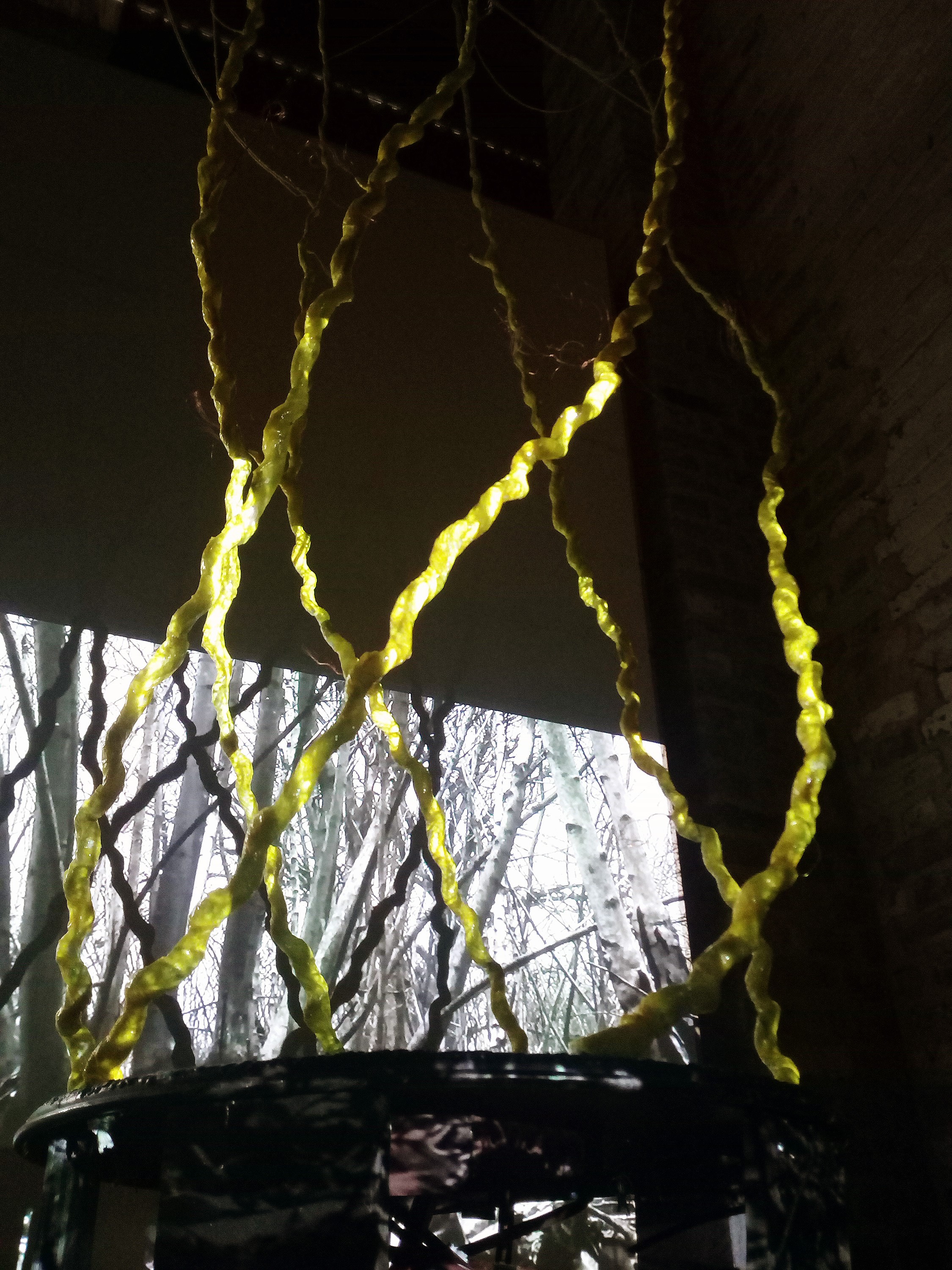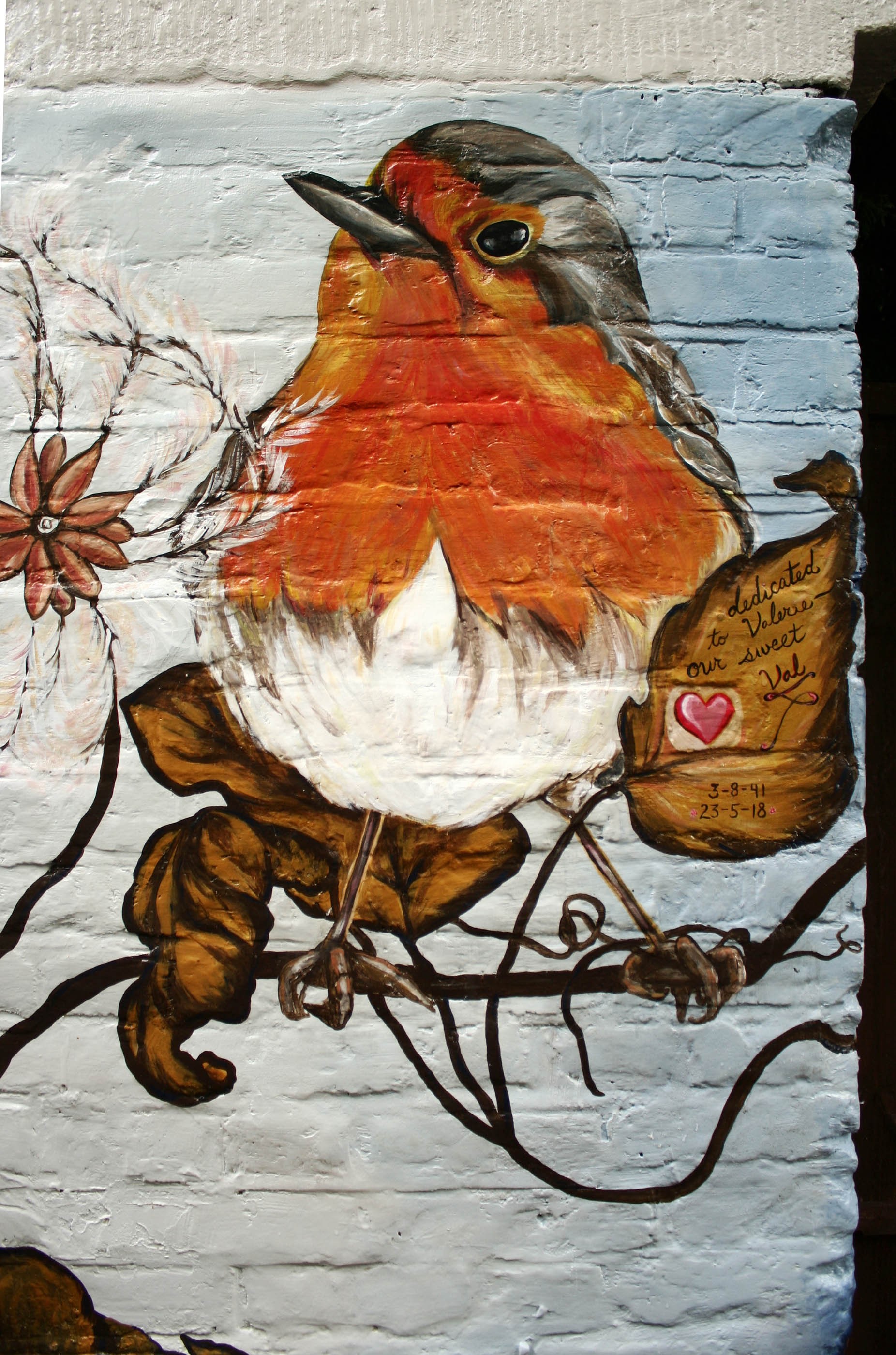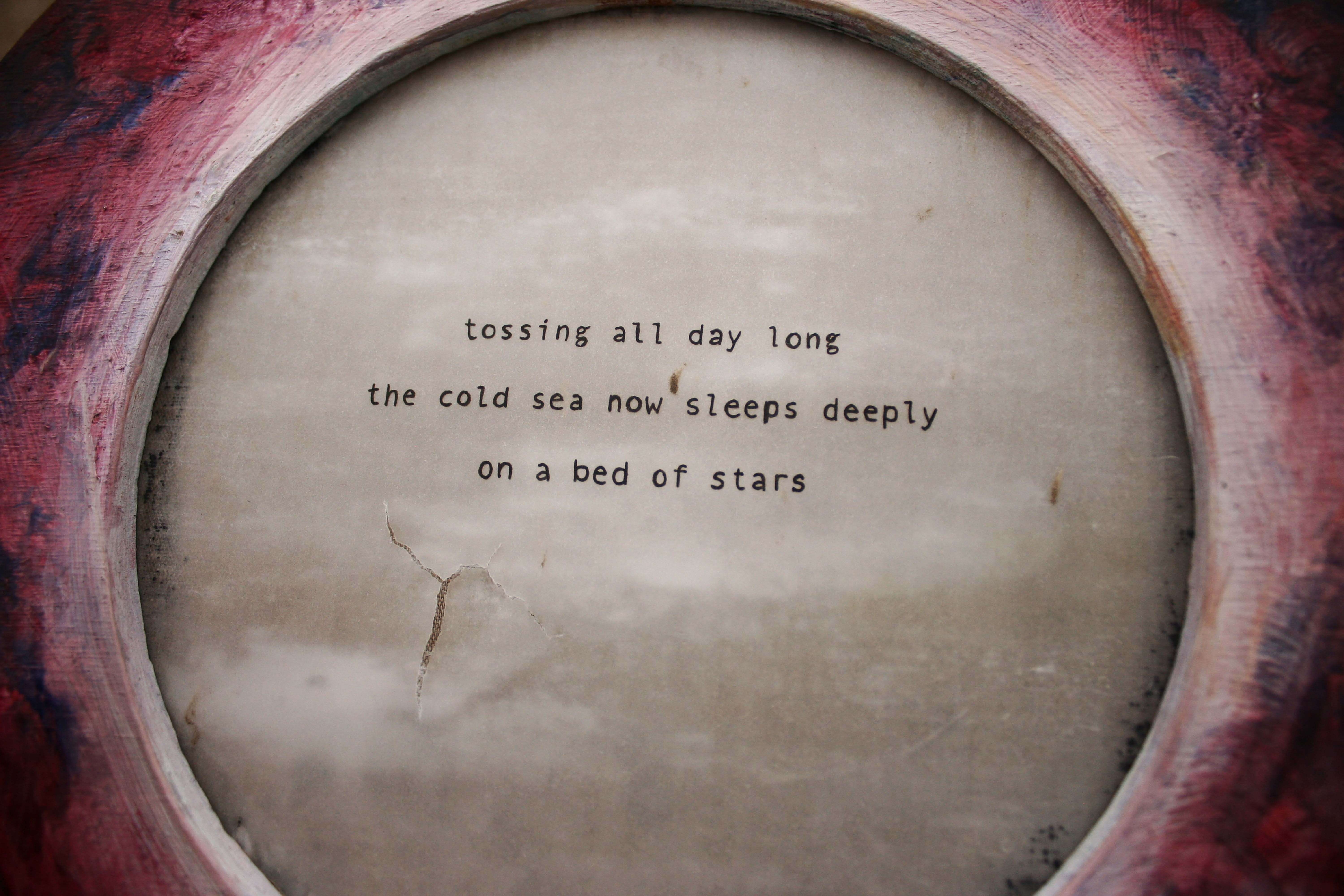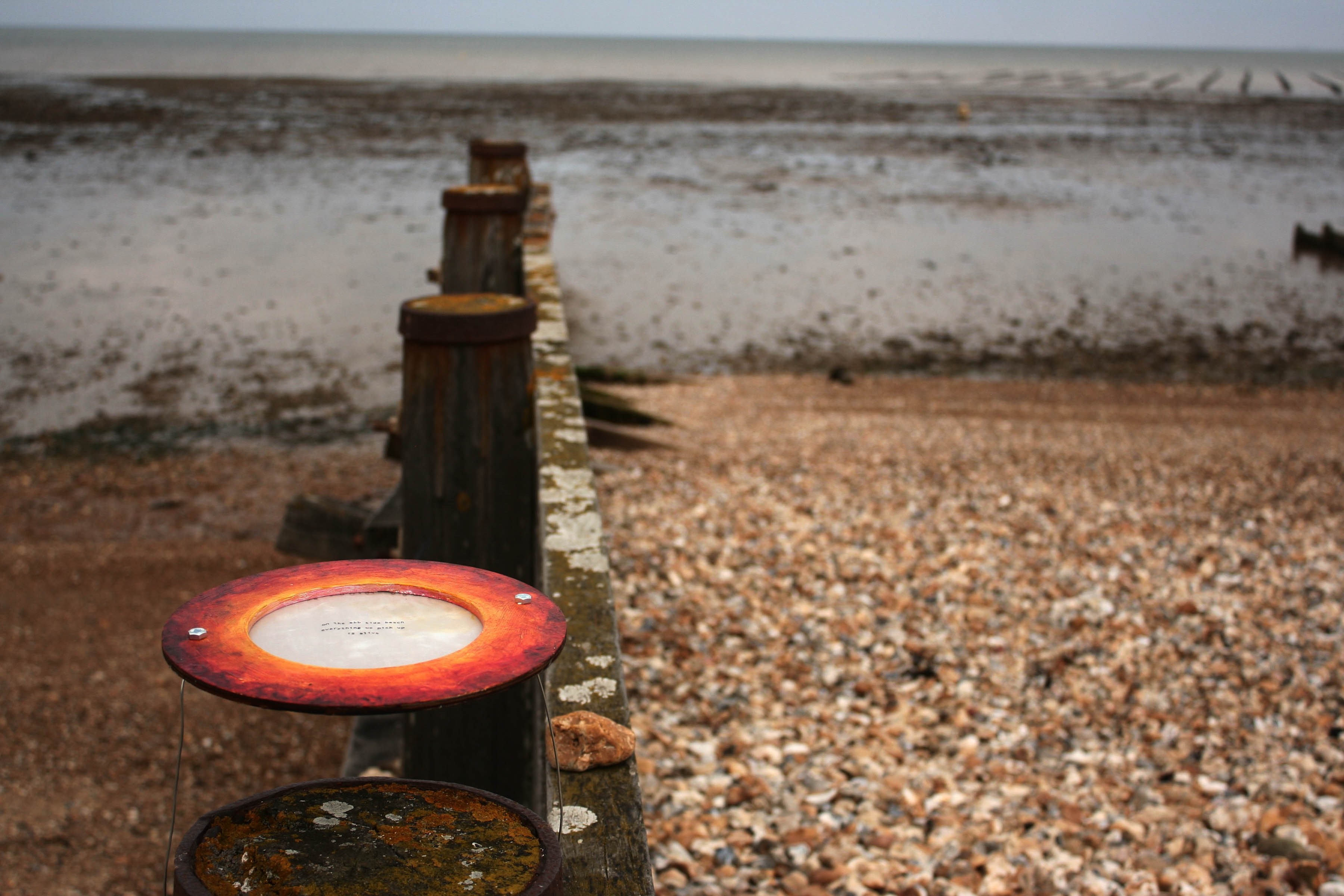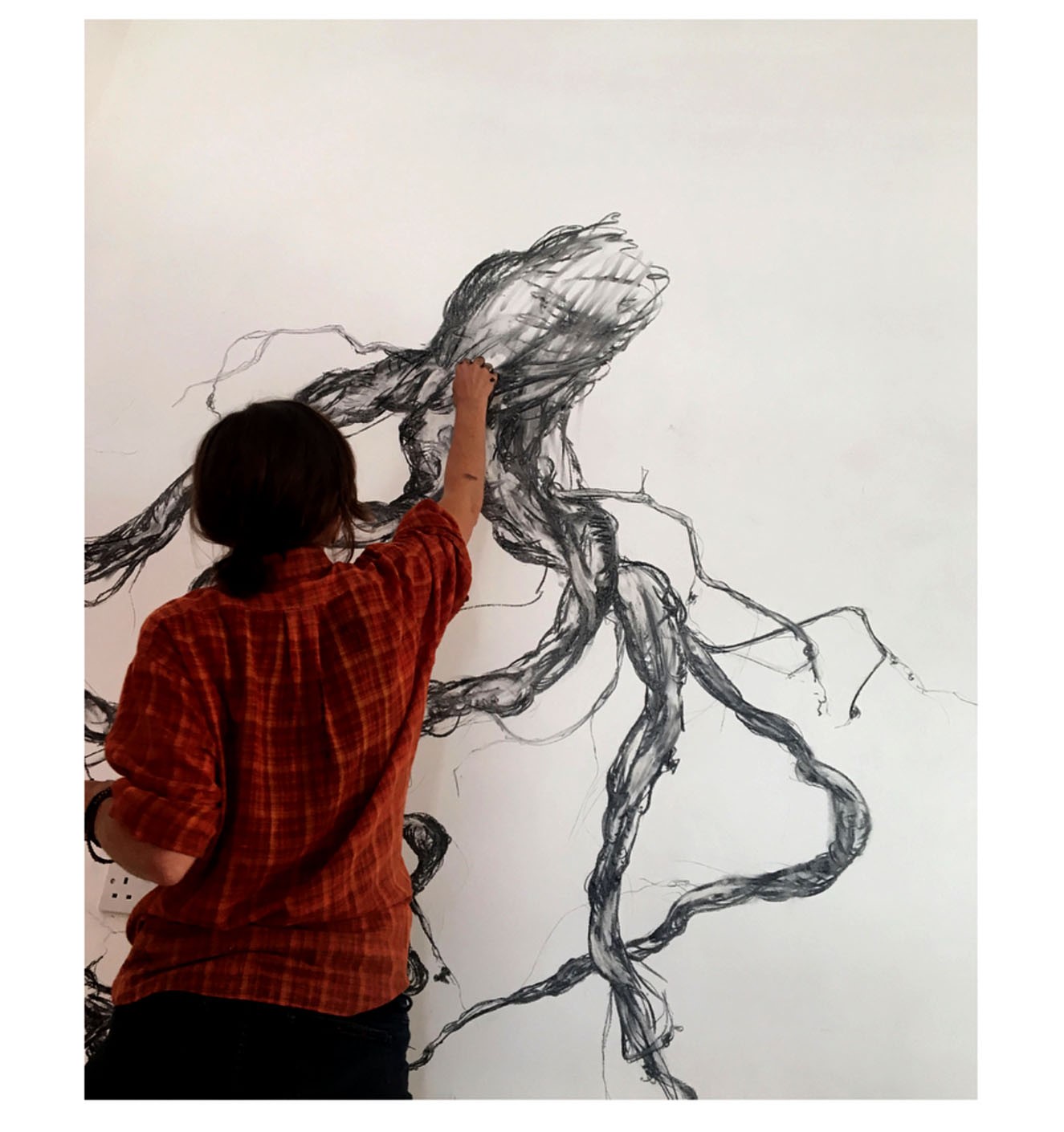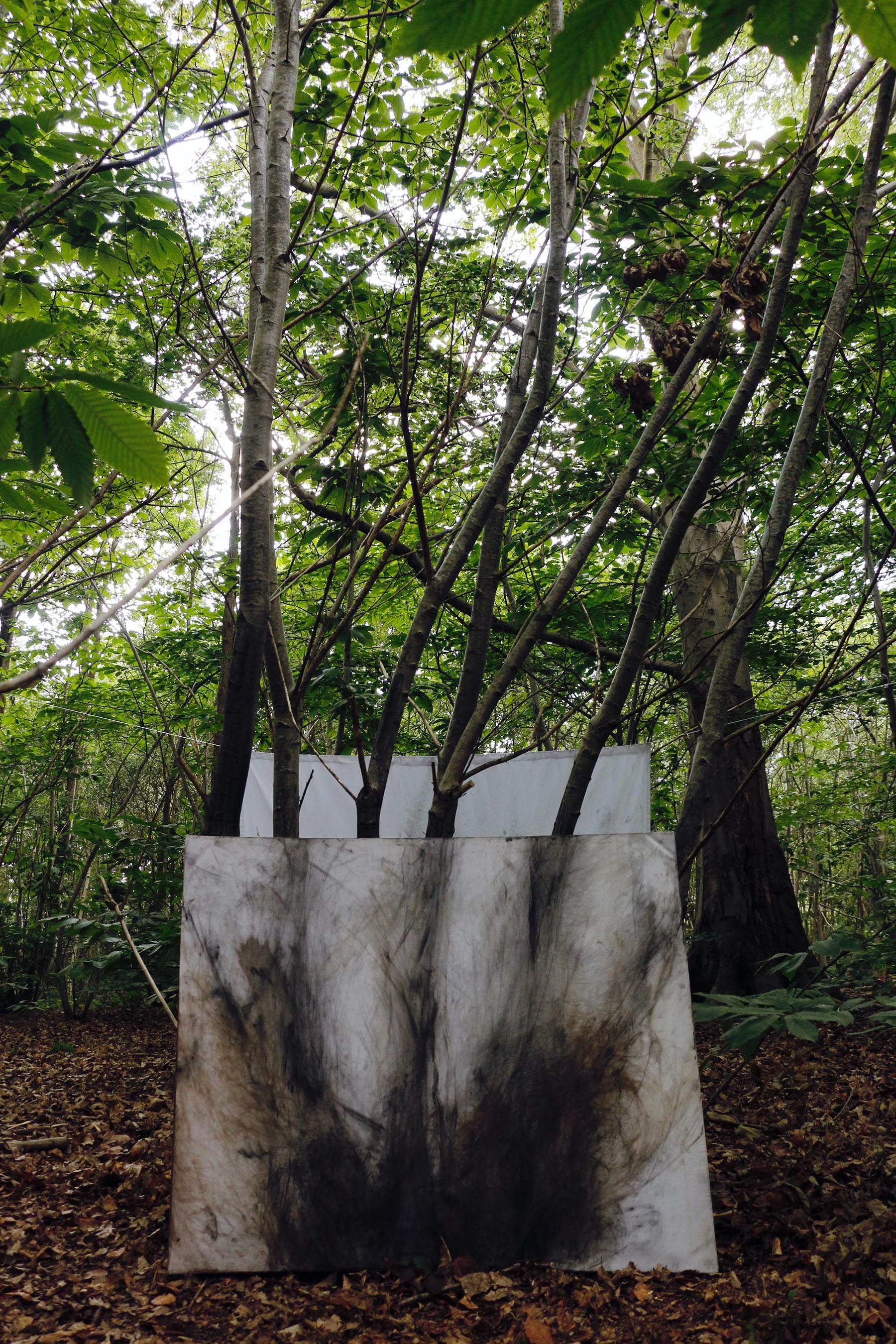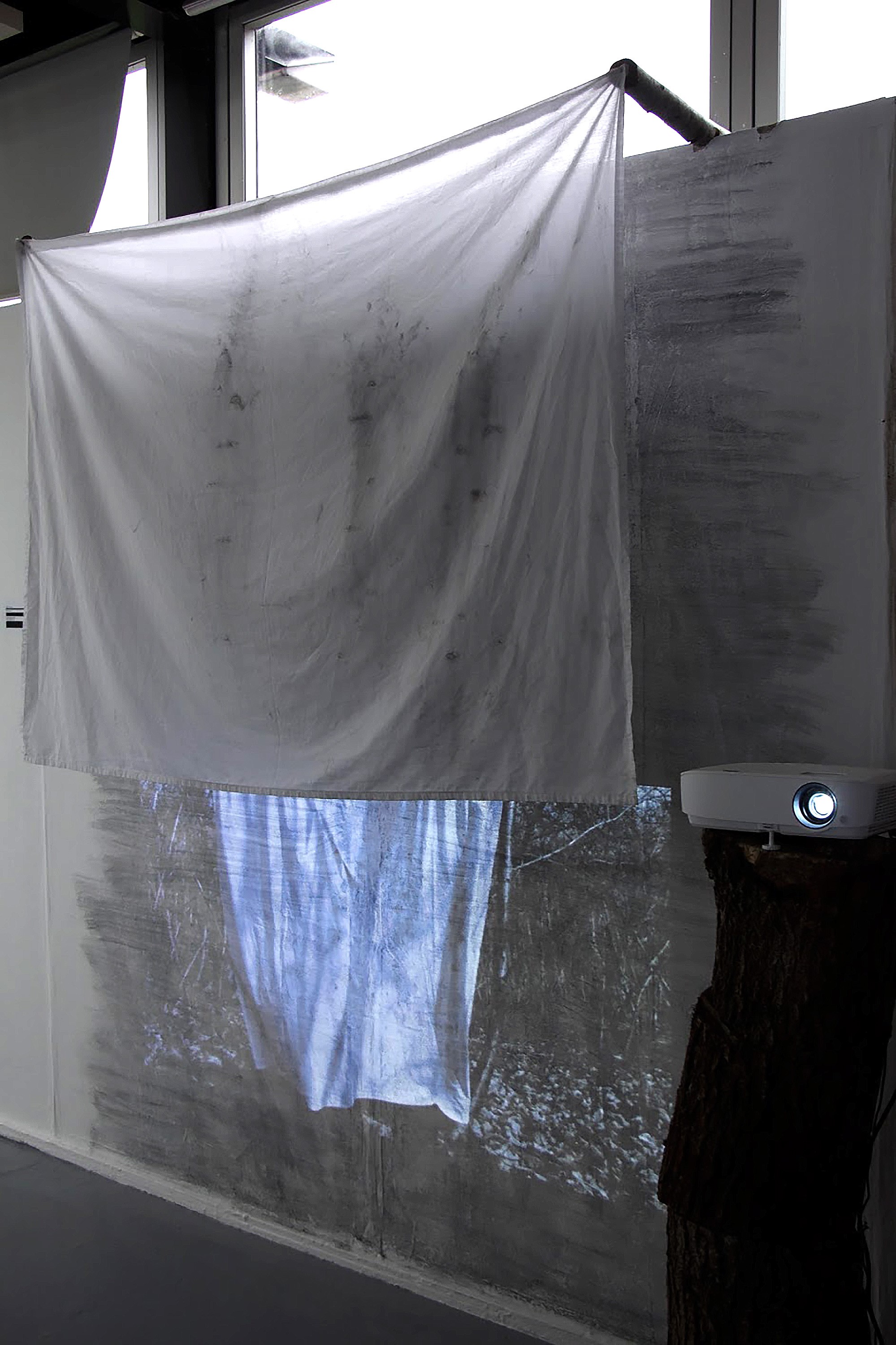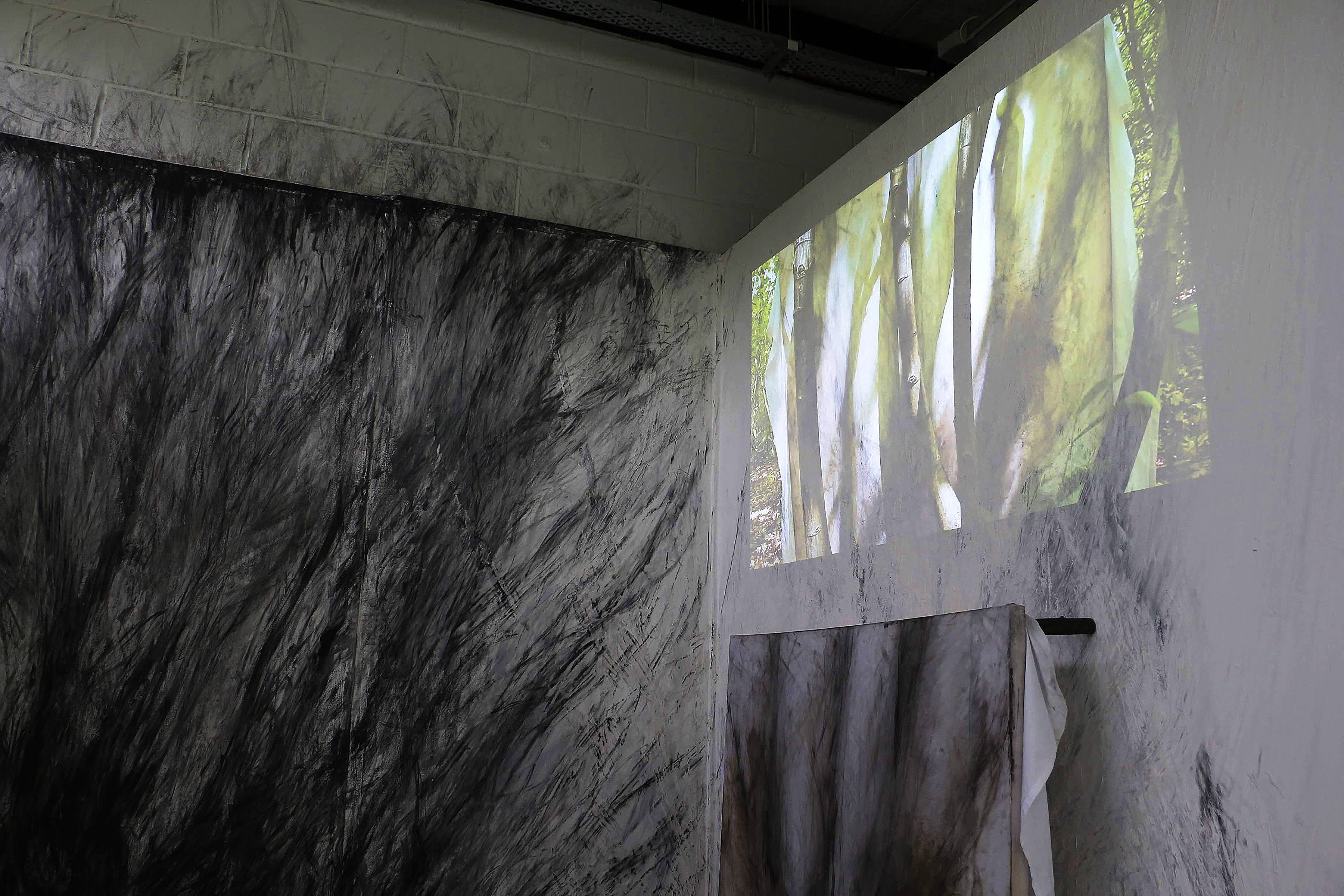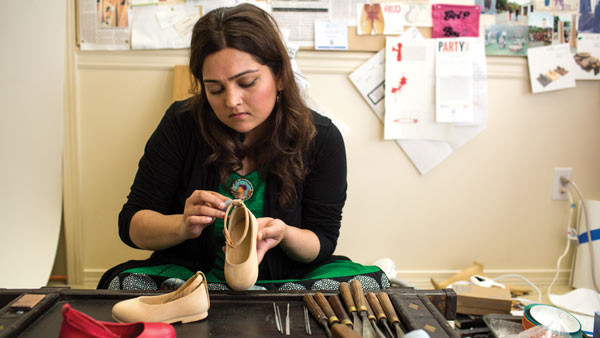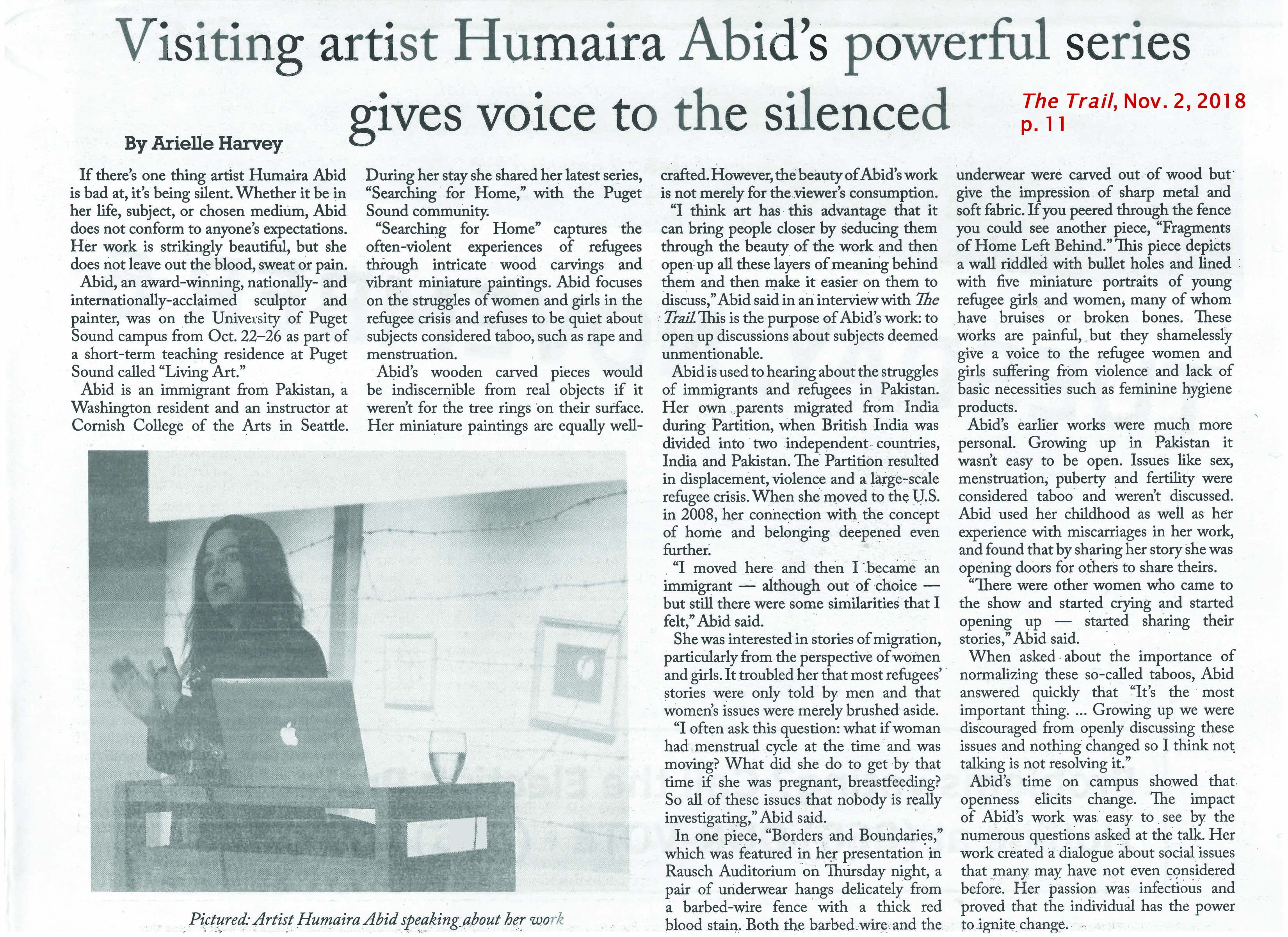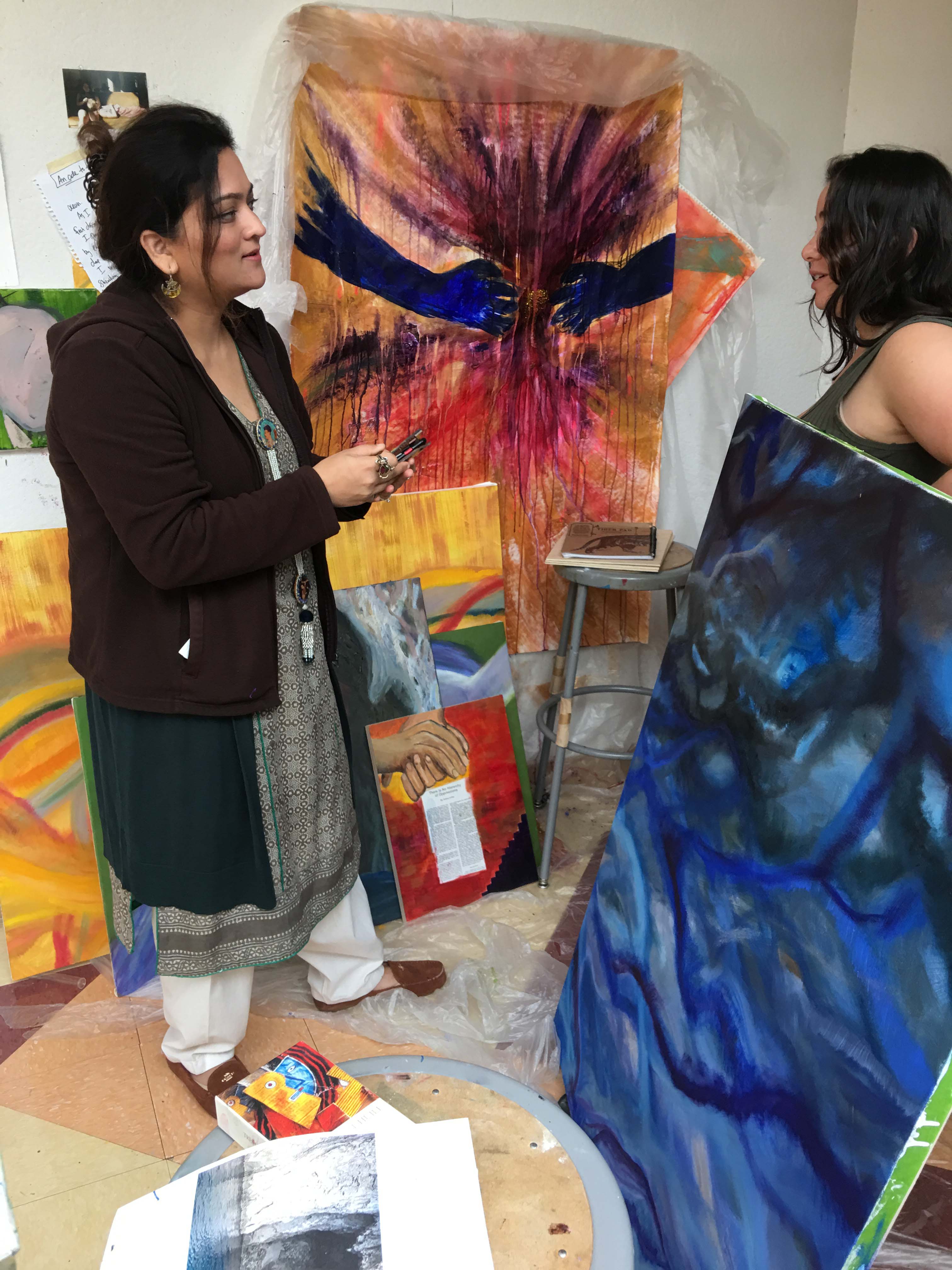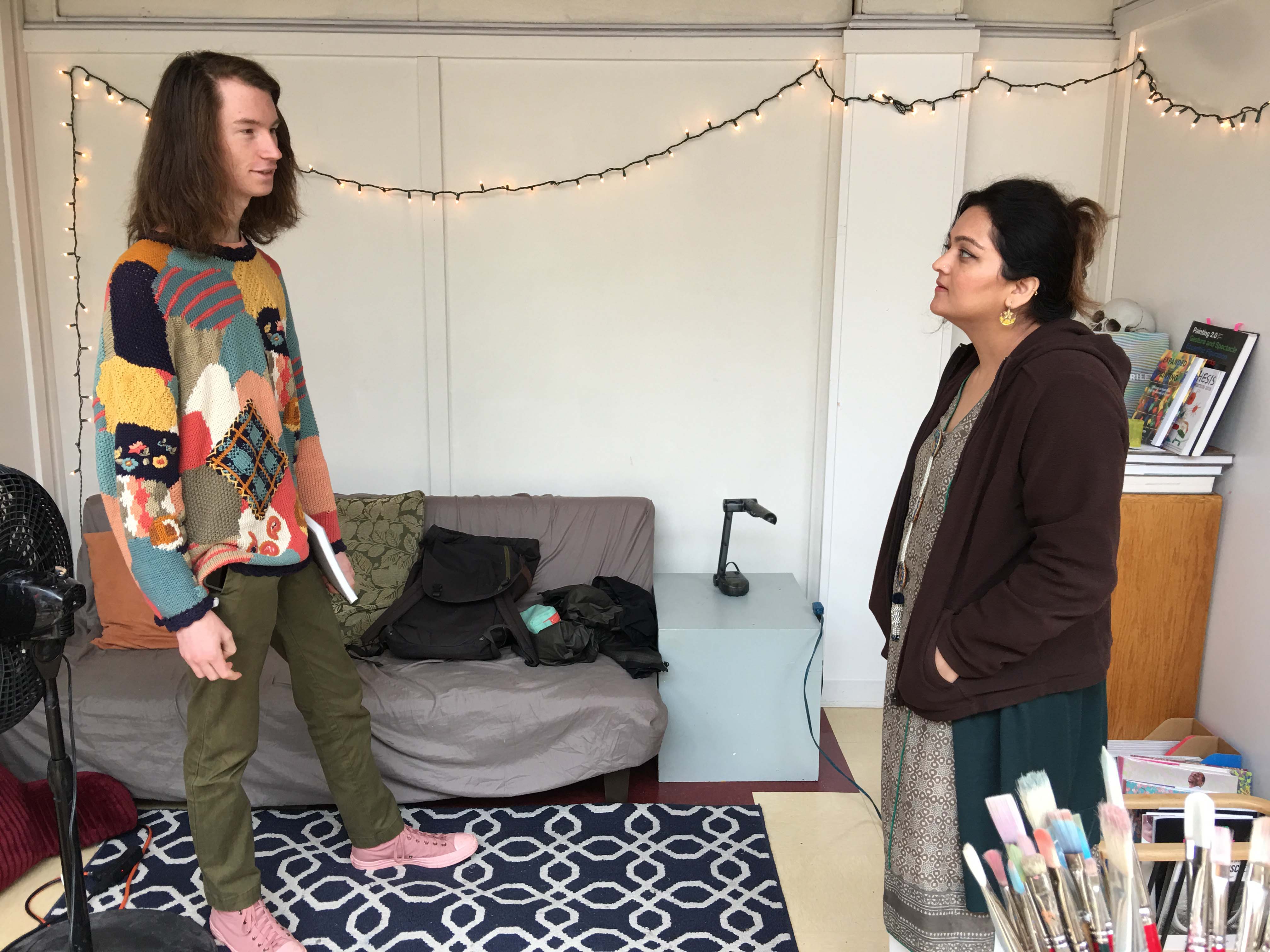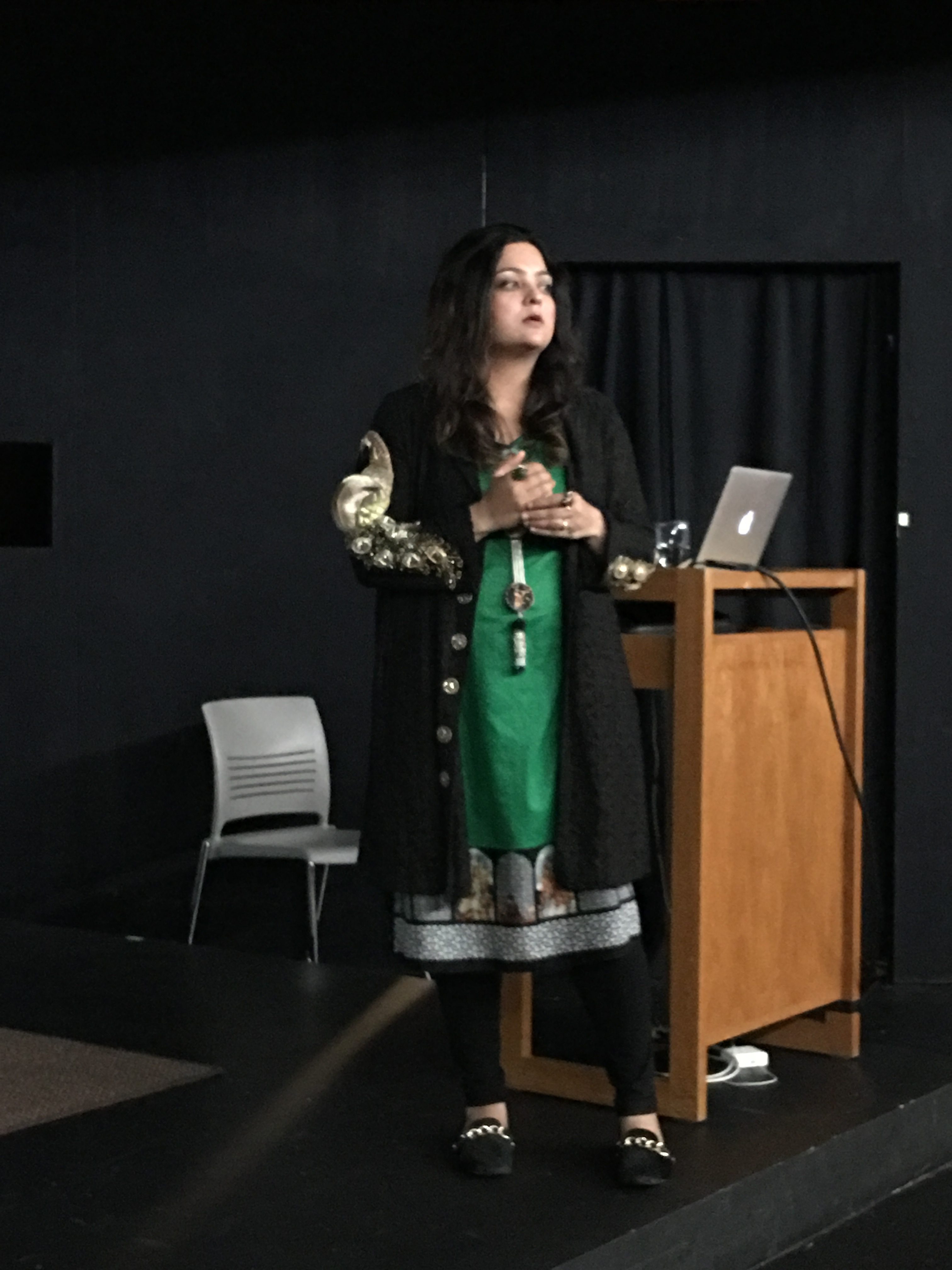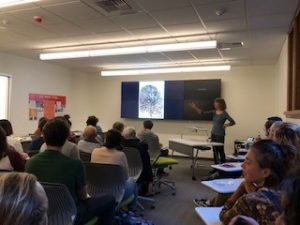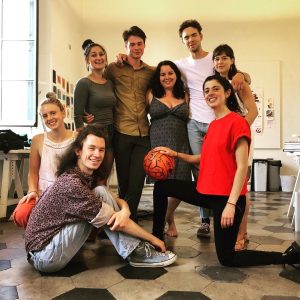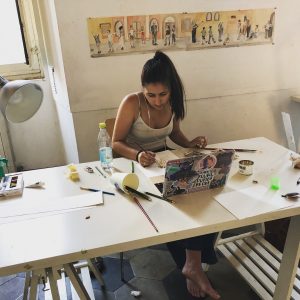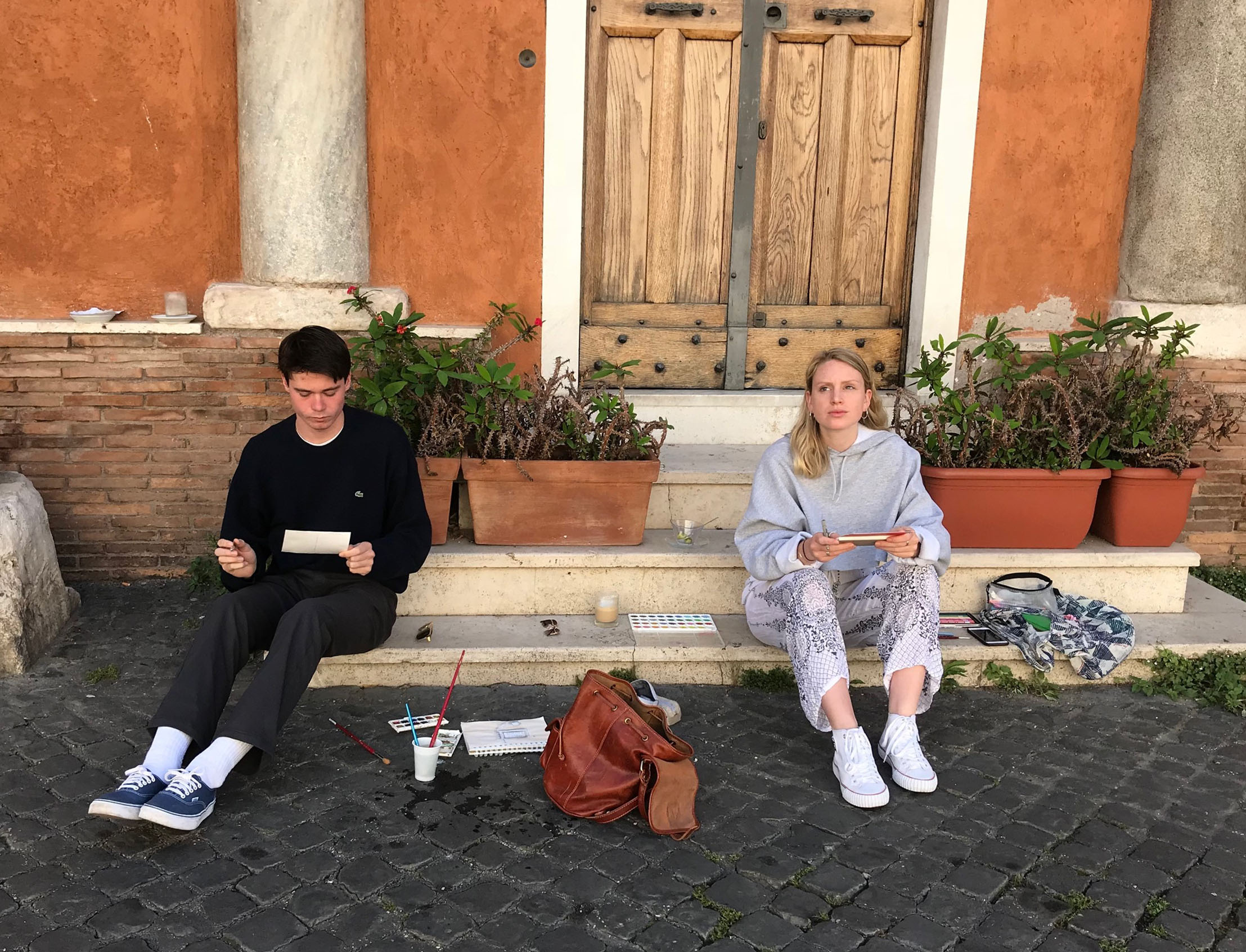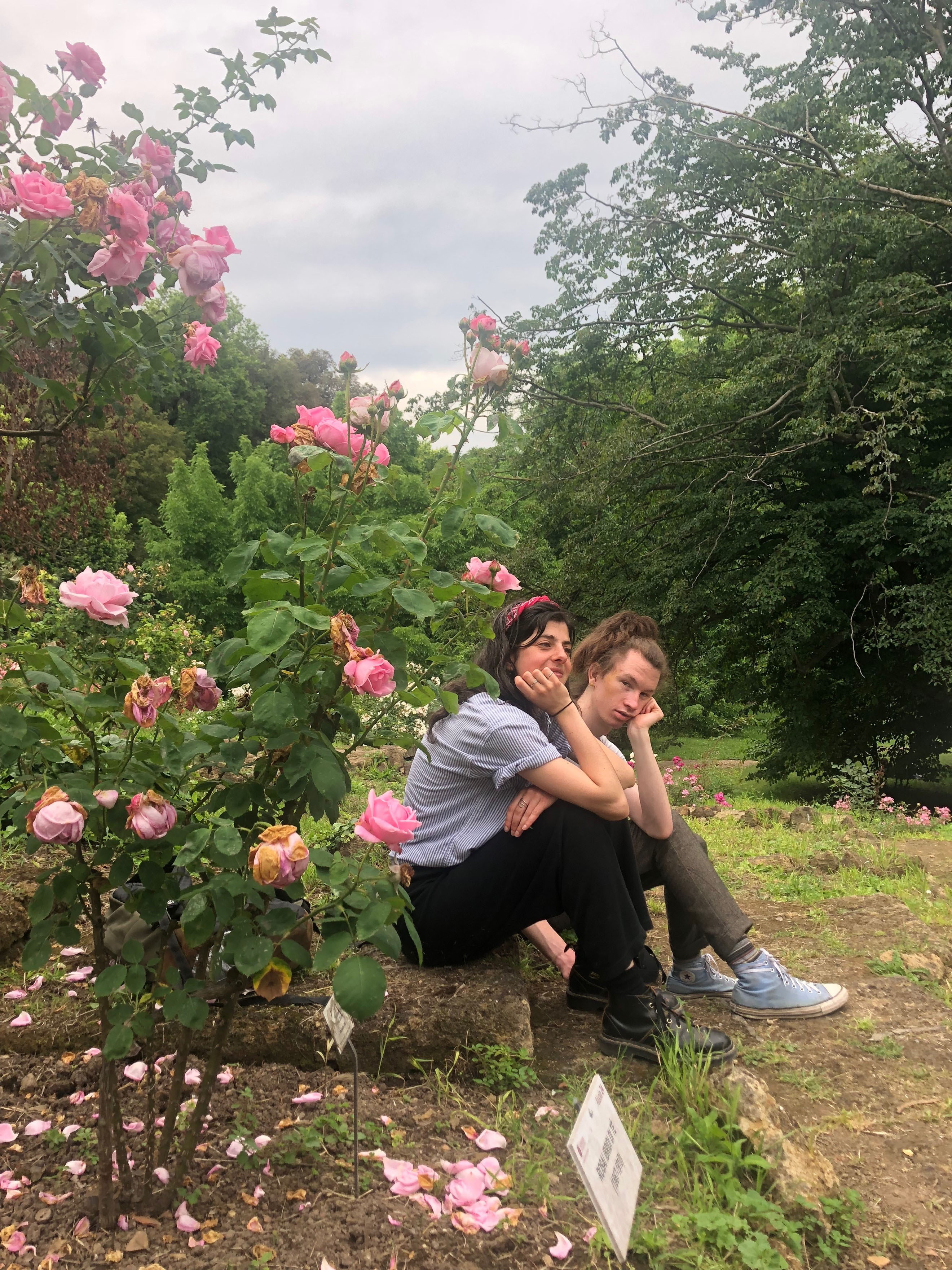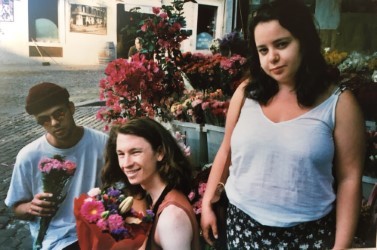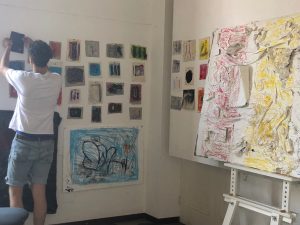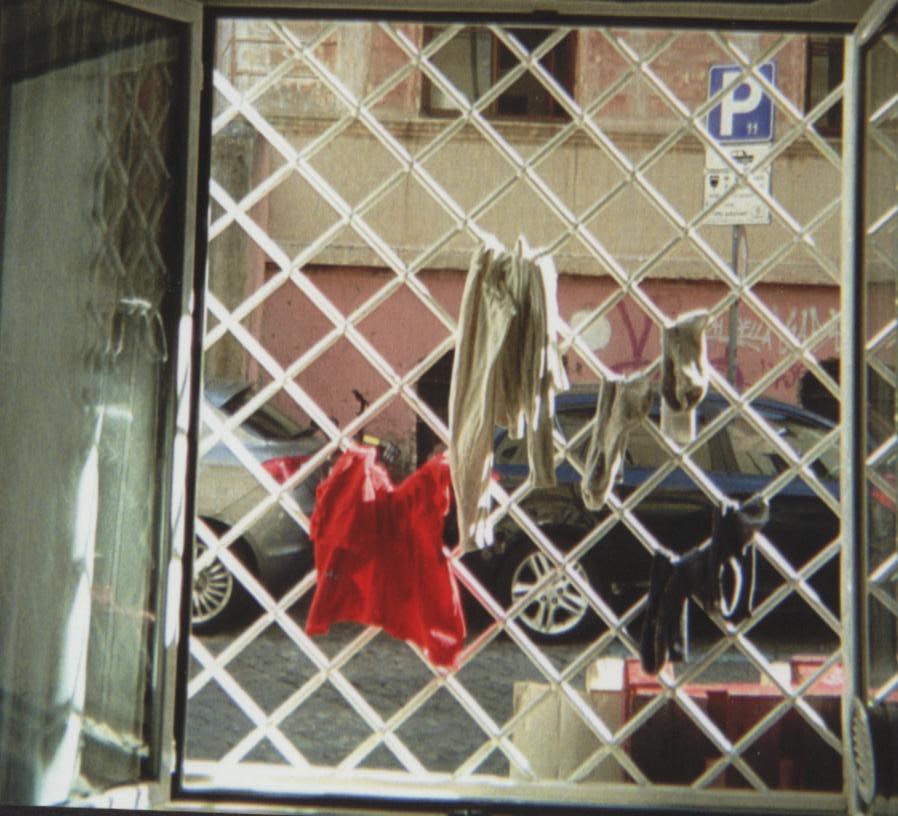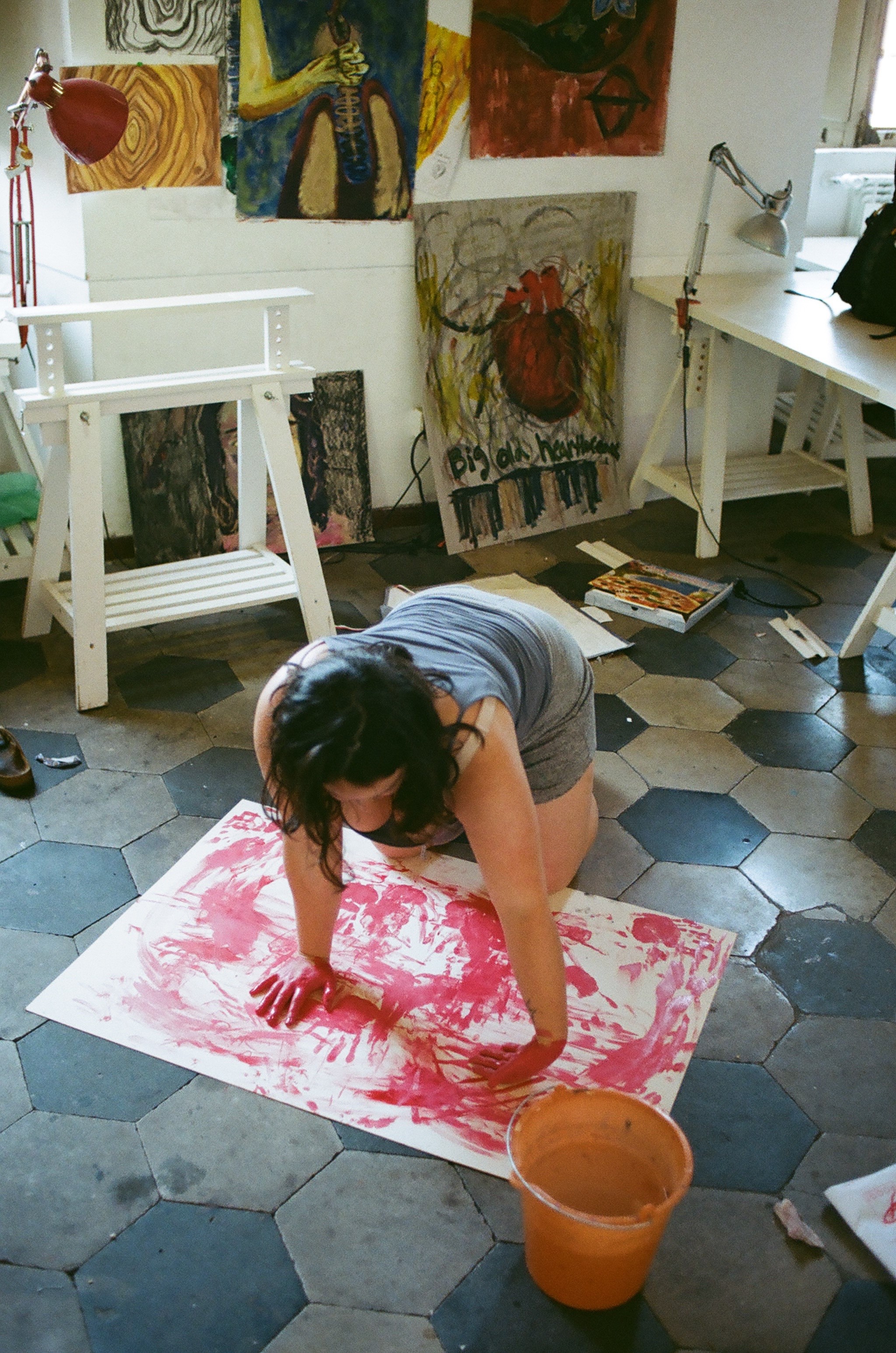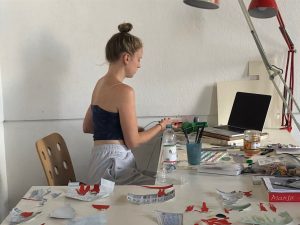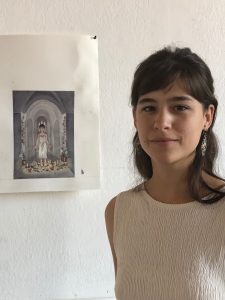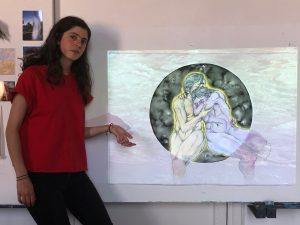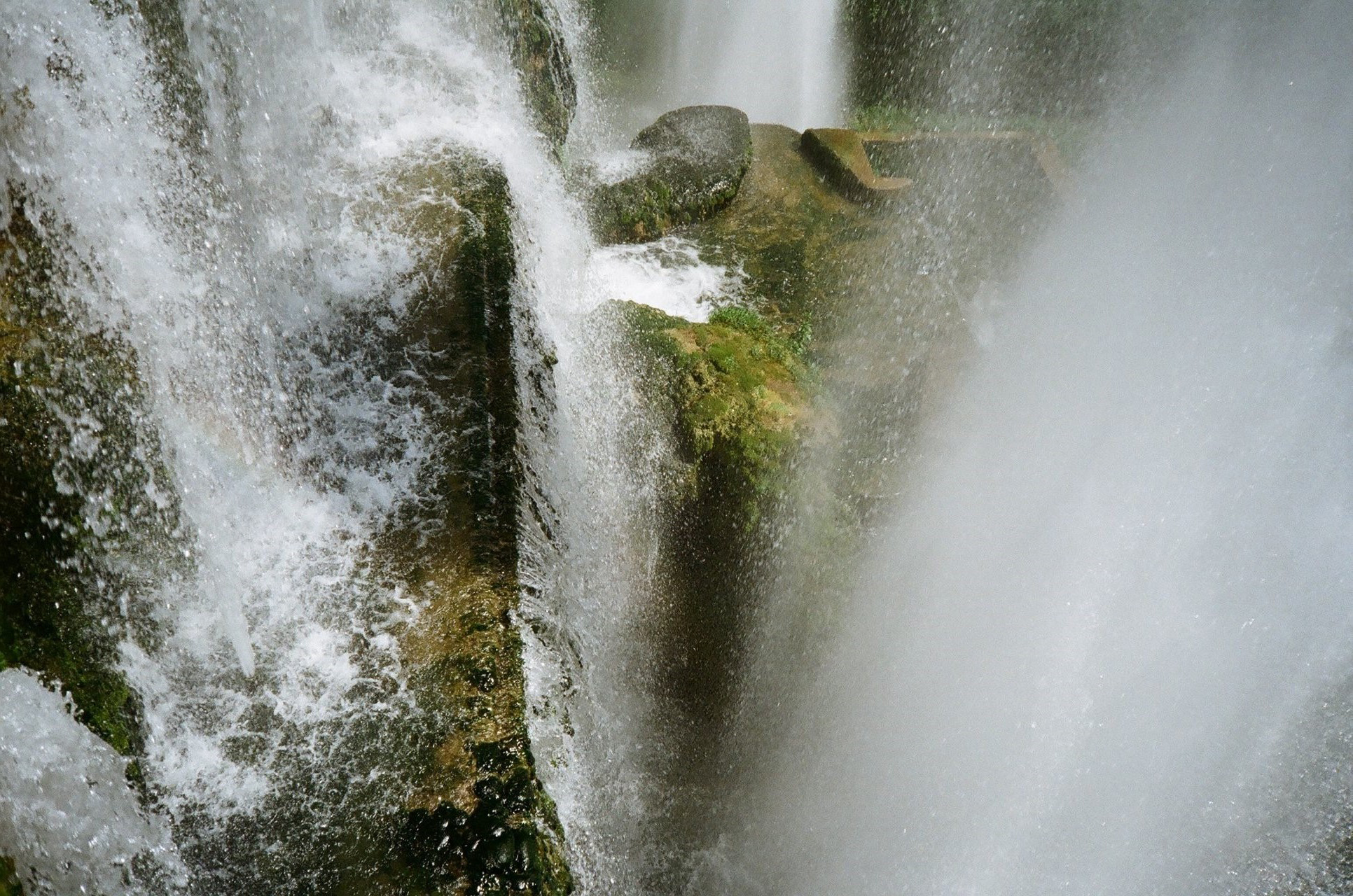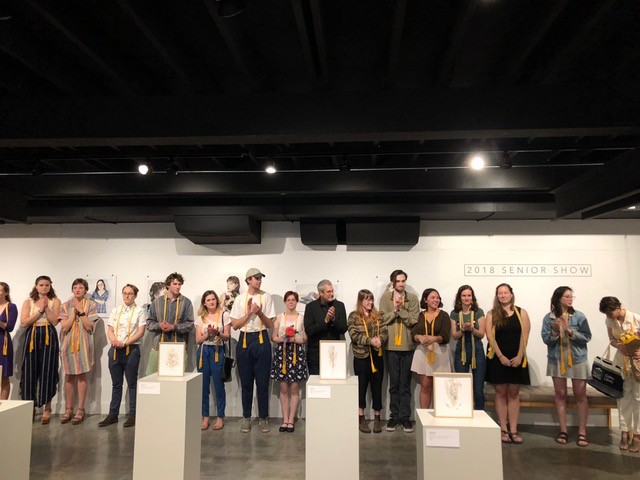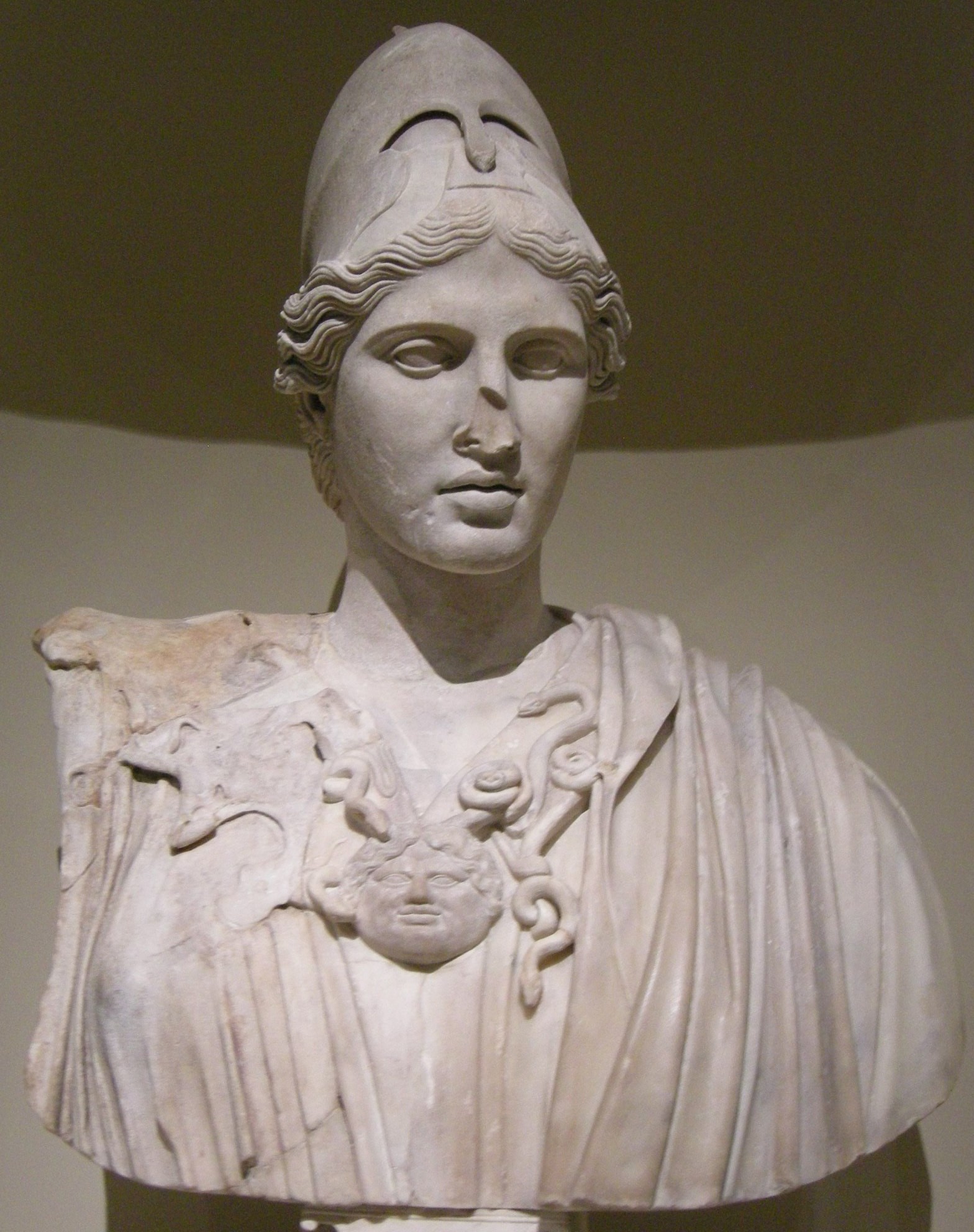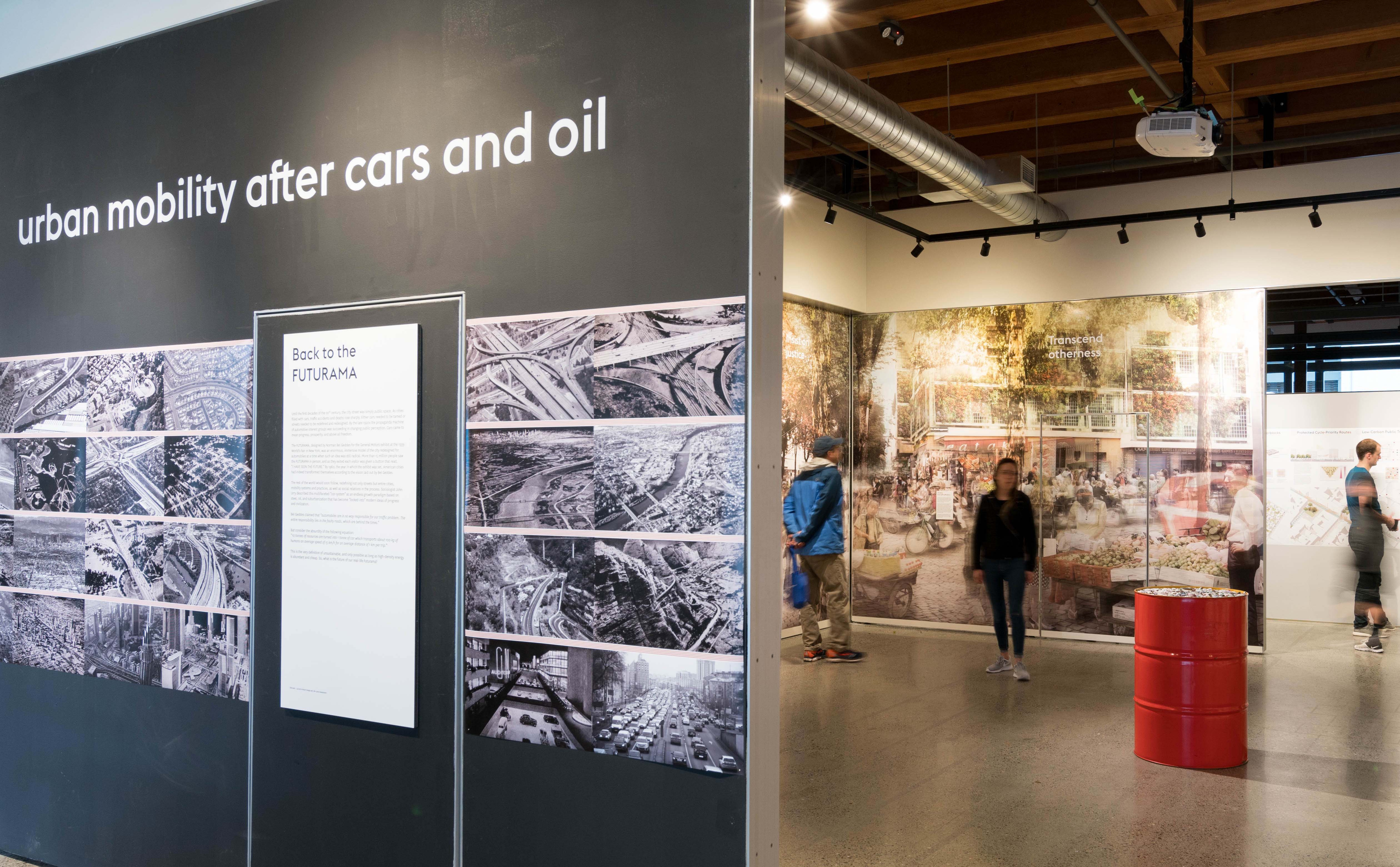Kelsey established the Kelsey Lee Offield Endowment in Art and Art History because she believes that there is no better way of experiencing art than in person. She wanted to create opportunities for Puget Sound art and art history students to travel internationally and spend time in the presence of great works, artists, and curators to gain an emotional and intellectual sense of art and connect with artists and curators and their vision. She hopes that the Kelsey Lee Offield Endowment in Art and Art History will enrich their education and provide a direct experience to develop an eye and understanding of nuances that otherwise go unrecognized.
Kelsey Offield Endowment in Art and Art History MOU

Kelsey Offield ’06, Art History Major, Photo Credit: Bryan Bernart
Alumna Kelsey Offield’s vision for the Offield Endowment in AAH has come to life! Two AAH students, Ronda Peck ’19, Ceramics and Kate Threat, ’20, Art History were the inaugural recipients of the annual Offield Endowment Travel Fellowship. Each awardee was selected from a competitive pool of applicants, writing compelling proposals that addressed how their educations at Puget Sound and beyond would be significantly enriched by international encounters with particular artworks and collections.
Ronda Peck

Ronda and her son Ben, Photo Credit: Charlotte Fron
Ronda visited Berlin over spring recess last year and visited an astonishing 12 museums as well as multiple galleries. She was in the midst of completing her senior art thesis, so this opportunity to “saturate” herself in art came at a pivotal and poignant time.

Brandenburg Gate, Photo Credit: Ronda Peck

Ronda presenting on her Offield Travel Fellowship, May 2, 2020
Two museums were particularly meaningful to her, Die Brucke and the Kathe Kollwitz Museum. These museums facilitated her deep, “emotional and intellectual sense of art” while allowing her to “connect with artists and curators and their vision.”
Ronda was particularly struck at Die Brucke Museum by the importance of artistic communities in shaping each artist’s particular practice, vision, and sustenance on multiple levels. While witnessing the work of a group of artists at Die Brucke Museum who had been labeled “degenerate” by the Nazis, Ronda became aware of the profound role fellow artists play in one another’s lives:
I… realized that participation in a community surrounded by brilliant artists is vital to my own survival. There was a saying that I created while I was in Berlin, and kept repeating it over and over in my head. It was, “without you there is no me and there wouldn’t be a we”
Ronda also found the first-hand experience of Kathe Kollwitz’s work to be incredibly powerful, stating that while “…observing her work, I could sense the profound connection of her inspiration and a force that was so strong and powerful that I started to have my own personal awakening.”

Outside the Kathe Kollwitz Museum, Photo Credit: Ronda Peck
Awakening, inspiration, and insight infused Ronda’s trip to Berlin and will continue to fuel her journey as she pursues her practice as an artist. Ronda is currently earning her MFA and continuing to expand her community of artists and deepening her own artistic vision. She is busy developing her artwork, building her pedagogical skills, and building relationships with artists from across the country.

Ampelmännchen on display in Berlin, Photo Credit: Ronda Peck
Kate Threat

Kate Threat outside Buckingham Palace in London
Art history major Kate Threat visited London with the primary intention of exploring Impressionist and Post-Impressionist paintings and returned transformed, with revised ideas about not only her thesis but how art partakes in “global conversations” about power and representation and tells sweeping stories about culture and conquest.

Kate Threat presenting on her 2019 Offield Travel Fellowship, February 24, 2020
One of the powerful reasons for visiting art in person is that you never know how it will affect you until you stand before it. Kate found that the affecting presence of one historical painting, in particular, was further enhanced by being in the city where the event that it represents took place. While not usually a fan of grand historical paintings, Kate couldn’t take her eyes off of Paul Delaroche’s Execution of Lady Jane Grey. Partly this was due to its monumental scale and vivid imagery but she also found it “very moving” to see it in the place where the drama took place. Kate had previously visited the Tower of London, the scene of Lady Jane Grey’s execution.

Paul Delaroche, Oil on canvas, 97 x 117 inches, 1833, National Gallery, London (Wikimedia)

The Tower of London, Photo Credit: Kate Threat
Kate also found herself in spending hours experiencing JMW Turner’s paintings at the Tate Modern. She spent hours at this museum, which owns the majority of his works until she couldn’t stay any longer as the museum was closing for the day! She left suspecting that his work may “work its way into her thesis.”

Three Turner paintings at the Tate Modern, Photo Credit: Kate Threat
It was at the British Museum where context and framing became a primary focus as Kate encountered wall text and approaches to the placement and display of artwork that brought the “vastness” of the British empire to life. The quote below said a great deal about how art factors into “big broad story of war and conquest” and how museums can contextualize their own practices self-serving biases.

The British Museum, Photo Credit: Kate Threat
Kate’s visit to London facilitated seeing how museums share and/or obfuscate cultural traditions. She encountered a resounding example of cultural obfuscation in the basement of the British Museum where African Art was sequestered in a “so, so, so, so dark” space, displayed without a sense of continuity in terms of “time, place, or tradition.”
Seeing art in multiple museum contexts while in London has inspired Kate to use her voice as an art history major to join the “global conversation” about art’s role in broadening cultural understandings in ways that promote fuller frameworks and more inclusive contexts.
Kate and Ronda’s transformative experiences are a testament to the powerful positive impact donor-supported endowments like the Kelsey Lee Offield Endowment in Art and Art History provide. Such support fosters indispensable experiential learning opportunities for Puget Sound students that complement and enhance their educations at Puget Sound in deeply meaningful ways.
























 Carrie Dedon, Assistant Curator of Modern and Contemporary Art, Seattle Art Museum
Carrie Dedon, Assistant Curator of Modern and Contemporary Art, Seattle Art Museum
